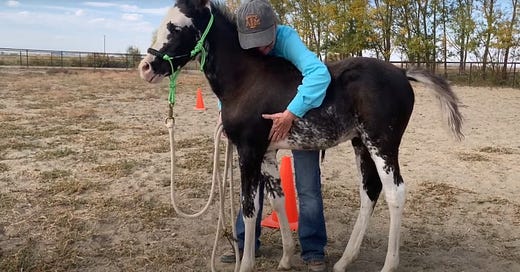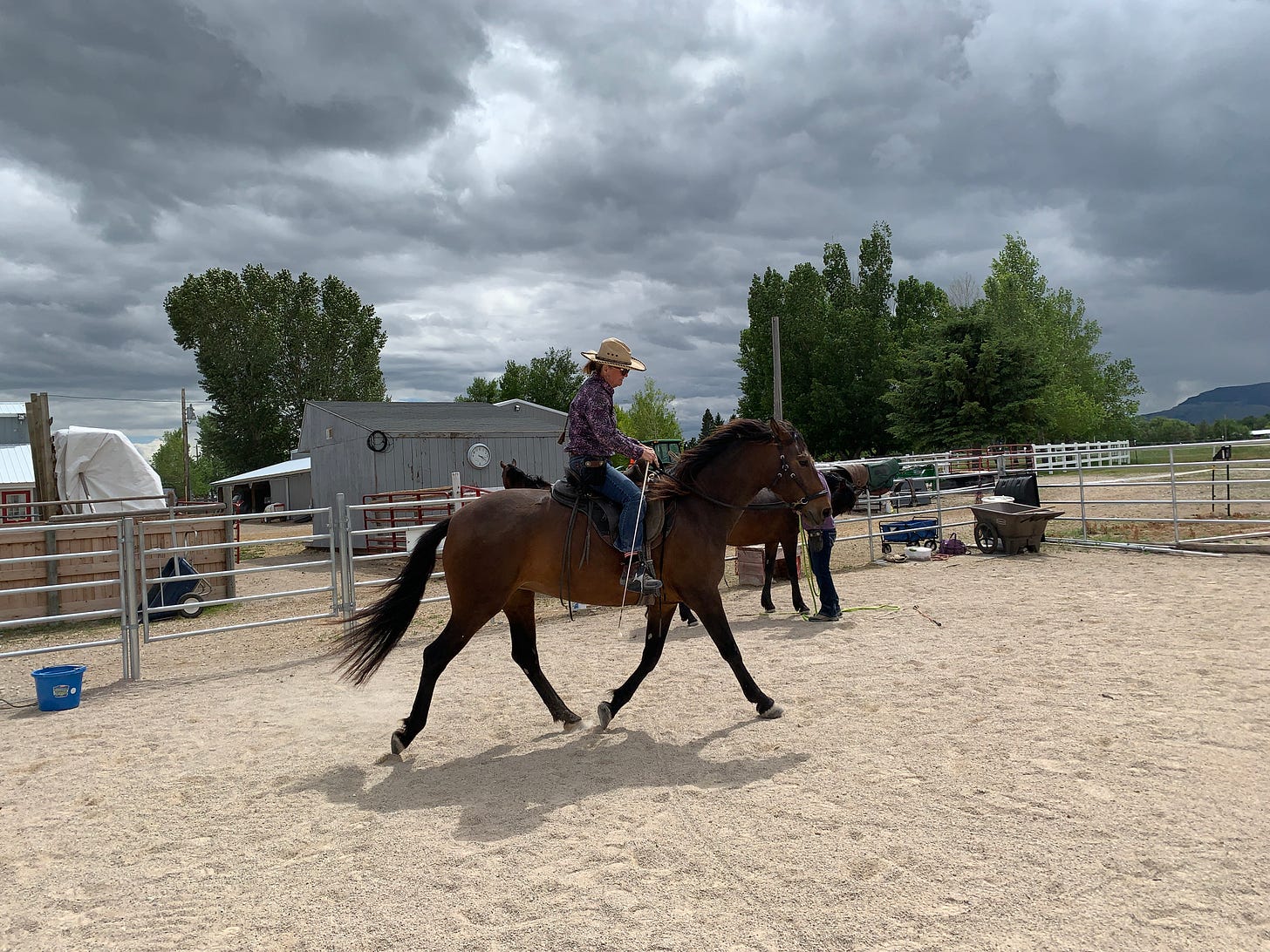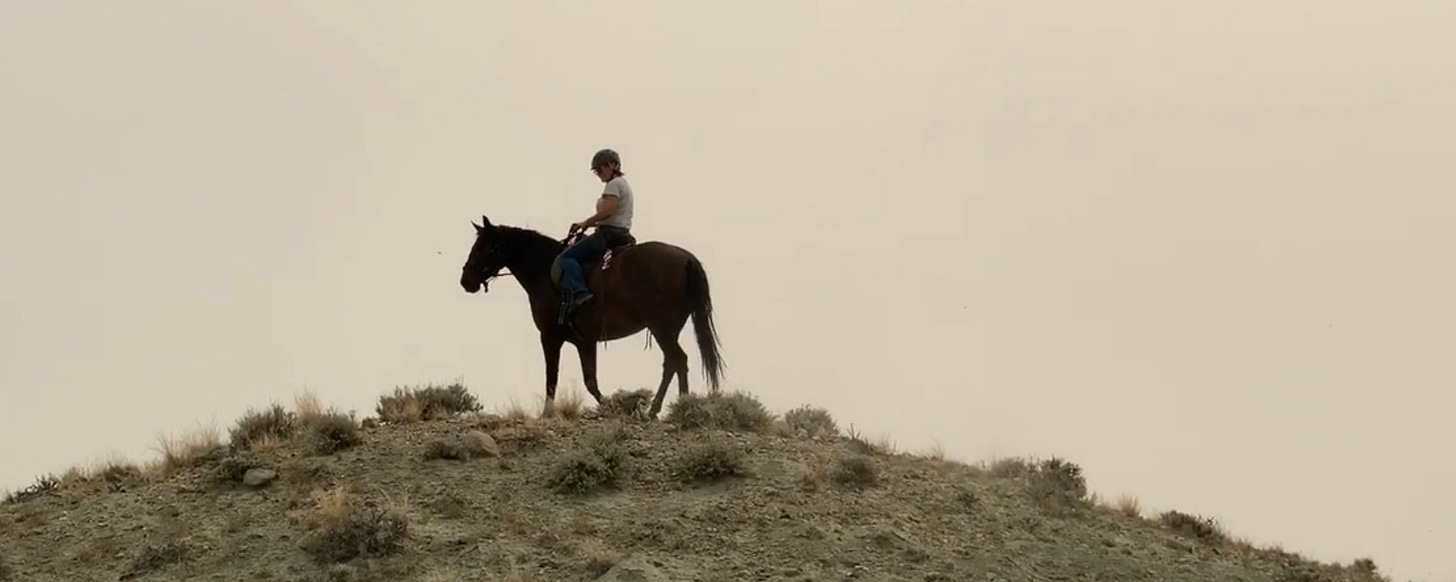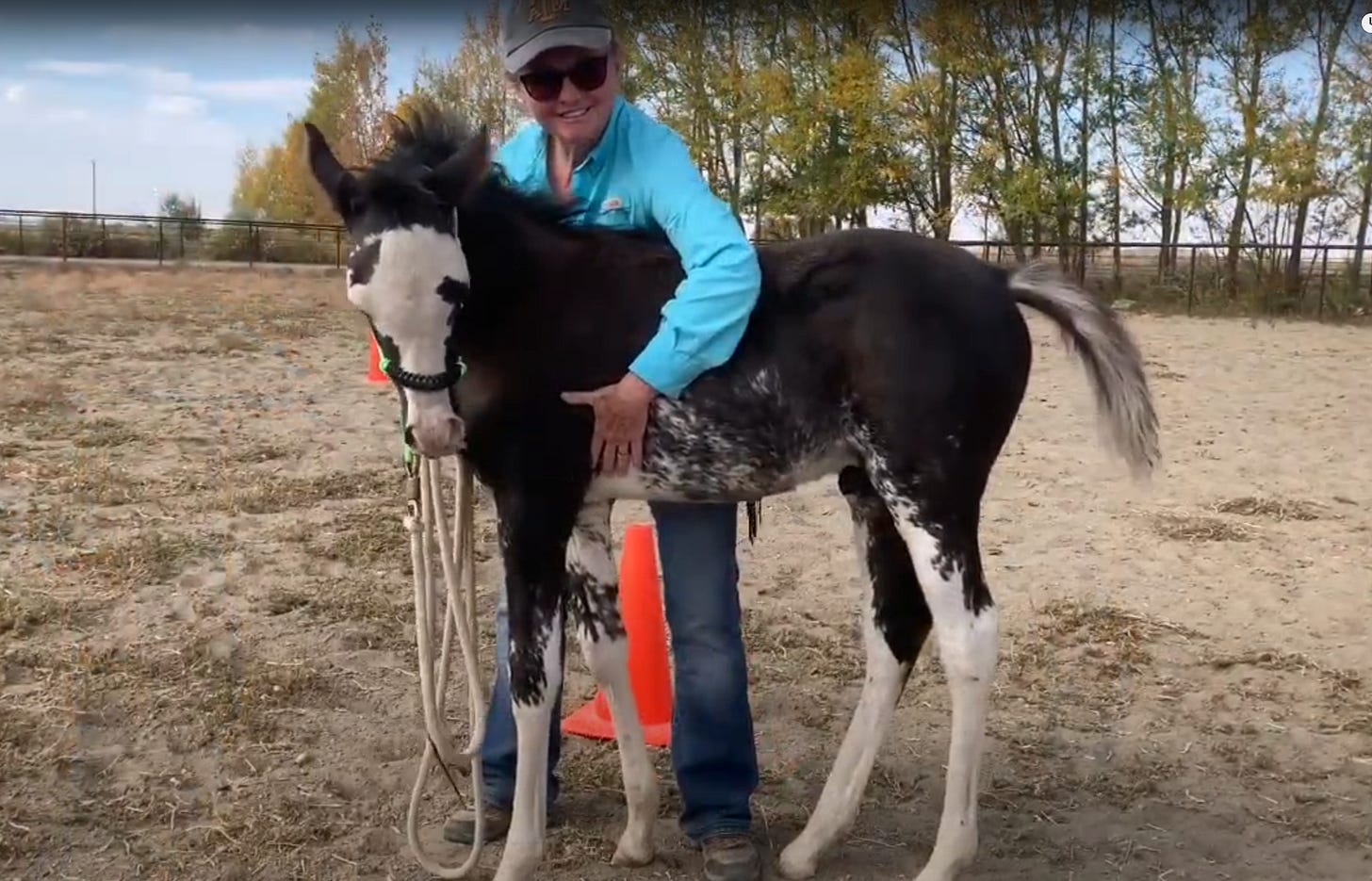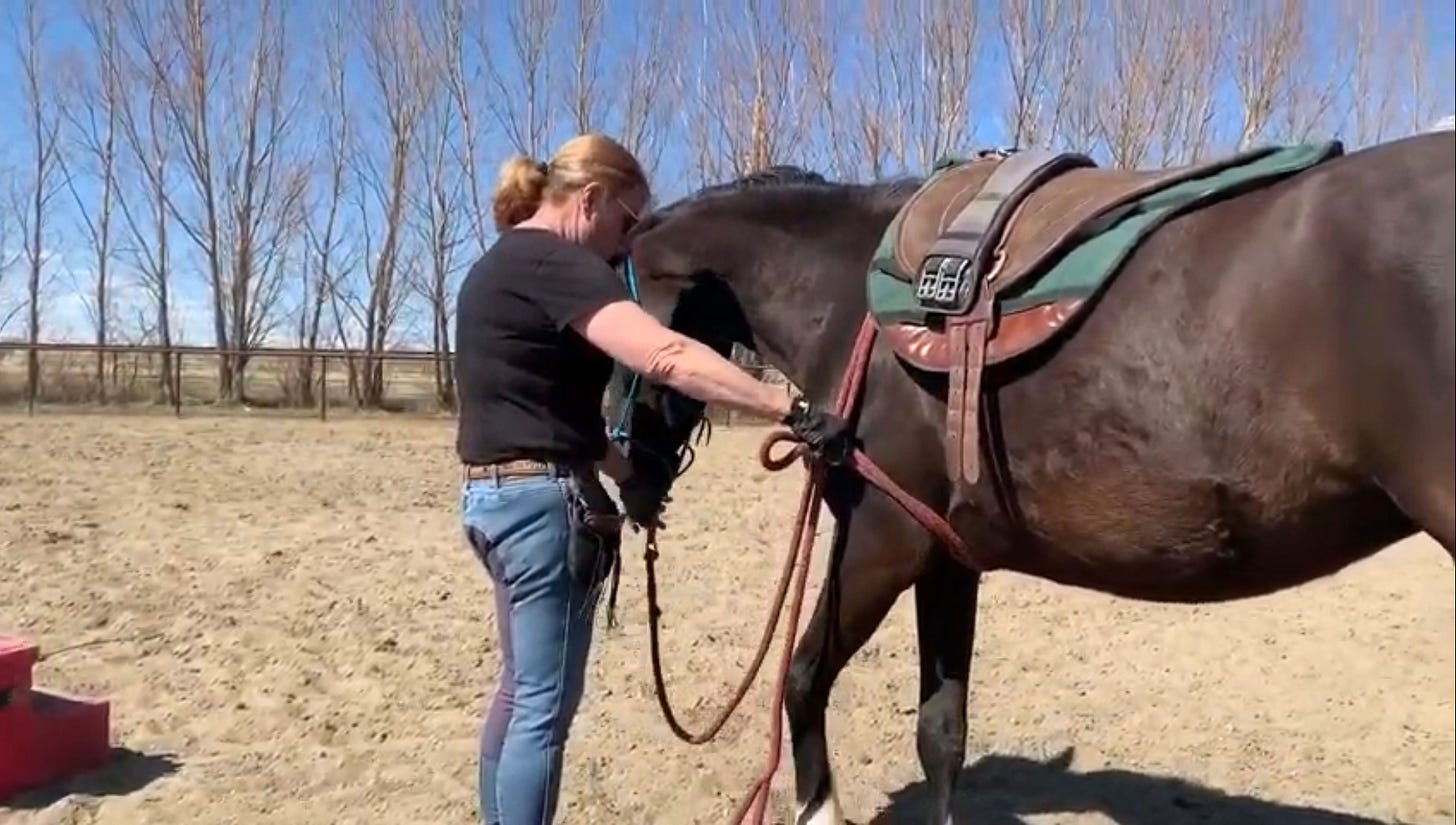As I was writing my one-rein stop article, I realized that explaining the saddle power position and the rationale behind squeezing (pressing) with the legs to gain a slowdown or stop would be helpful.
Many people are taught “squeeze-to-go”, so the idea of “squeeze-to-stop” might seem confusing and wrong. I’m not telling anyone which method is preferred, I’m sharing what has worked well for me and my horses.
The Saddle Power Position
To me, the saddle power position includes these elements:
A variable engagement of the rider’s core muscles, the same muscles one uses when holding in pee
A fluid lower spine
The ability to use one’s legs and arms independently from the core muscles
No use of the reins for balance
Pushing into the pommel or pommel horn of the saddle if needed or prudent
All of these elements are important, but if I had to pick one that I feel is most critical, it’s your ability to be balanced independently from the reins. Too many riders rely on the reins for balance, developing an addiction to the reins as a result. It’s also why so many riders ride with some form of contact when they should be able to ride on a loose rein as well as with contact, regardless of discipline.
When using the pommel/horn, pushing against it is important, as it will deepen your seat, making it less likely to have an unwanted dismount. Pulling on the pommel/horn like pulling on the reins, will put you in an unbalanced position, making it more likely you will be unseated in an “oh, no!” moment.
Squeeze-to-Stop (STS)
I first learned the concept of STS many years ago from my friend and fellow horseman Farrah Green. It made so much sense that I adopted it for myself and my horses.
At first, it took time for us to get used to squeeze-to-stop vs. squeeze-to-go. It’s easier to learn something than relearn it, even more so for horses than people. But with a bit of persistence, we got it done.
Here are some ideas on why STS makes sense.
When people get frightened as they are learning to ride, the instinctive response is to squeeze with their legs and get in the fetal position. If a horse learns to stop on a squeeze, an unwanted dismount can be avoided. STS is safer for riders.
Teaching a horse to relax when squeezed sets them up for success when being saddled, mounted, placed in stocks, or given injections, among many other situations. Why would we teach them to stand still when a girth is tightened around them, but move when we tighten our legs on them? In my experience, this makes horses easier to start under saddle.
Do we really want our horses to respond to a predatory behavior like squeezing, by leaving? Does that promote the relaxation we seek when we play with and ride our horses?
Think about what a squeeze communicates to us as humans. An example is getting a hug. When we get a hug, we hold still for those few moments. STS is one way to teach horses to sync up with our own tendencies.
My experience is that STS can be modified to be used with one or both legs to teach a horse to slow as well as stop, allowing me to use the reins with a lot more subtlety.
My favorite way to teach foals to relax when I squeeze them around the girth area is first with my arms, then as they grow, with ropes. I love ropes for this purpose, they make a great extension of my arms, but they are also something horses must get used to in living with humans.
If you have questions, feel free to comment below.
For more information about the amazing horses that have been and are being bred on the HAAP farm, go to www.arabpinto.com
If you have questions for me about any of my posts, please feel free to contact me at isabellefarmer@gmail.com or visit our Facebook page at www.facebook.com/arabpintos
